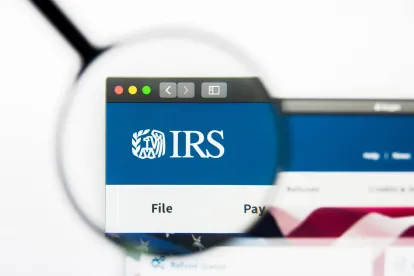Employee Benefits Alert
The Internal Revenue Service (IRS) has announced a two-year administrative transition period that delays until 2026 the new rule that catch-up contributions made by certain higher‑income participants in 401(k), 403(b), and governmental 457(b) plans must be designated as after-tax Roth contributions. The extension is welcome relief for recordkeepers and employers.
Notice 2023-62 provides initial guidance for Section 603 of Division T of the Consolidated Appropriations Act, 2023, known as the SECURE 2.0 Act of 2022, enacted in December 2022. Under that provision, starting in 2024, the Roth catch-up contribution rule applies to an employee who participates in a 401(k), 403(b), or governmental 457(b) plan and whose prior-year Social Security wages exceeded $145,000 (as adjusted). However, the notice delays the rule for two years. The transition period applies for the first two taxable years beginning after December 31, 2023. Specifically, until taxable years beginning after December 31, 2025, catch-up contributions will be treated as satisfying the rule even if the contributions are not designated as Roth contributions, and a plan that does not provide for designated Roth contributions will also be treated as satisfying the rule.
The Treasury Department and IRS intend to issue further guidance on the Roth catch-up contribution rule. The notice indicates that the guidance is expected to clarify that the rule would not apply to a participant who does not have FICA wages for the preceding calendar year from the employer sponsoring the plan. It would also provide that the plan administrator and employer would be permitted to treat an election to make catch-up contributions on a pre-tax basis as an election to make designated Roth contributions, as required. The guidance will address an applicable employer plan that is maintained by more than one employer (including a multi-employer plan). The guidance would provide that a participant’s wages for the preceding calendar year from one participating employer would not be aggregated with the wages from another participating employer for purposes of determining whether the wages for that year exceed $145,000 (as adjusted). The guidance also would provide that, even if a participant is subject to the rule because the participant’s wages from one participating employer in the plan for the preceding calendar year exceed $145,000 (as adjusted), elective deferrals made on behalf of the participant by another participating employer that are catch-up contributions would not be required to be designated as Roth contributions unless the participant’s wages for the preceding calendar year from that other employer also exceed that amount.
The Treasury Department and IRS are inviting comments and suggestions regarding the notice, including, in particular, the matters raised for future guidance. Comments should be submitted in writing on or before October 24, 2023.




 />i
/>i

